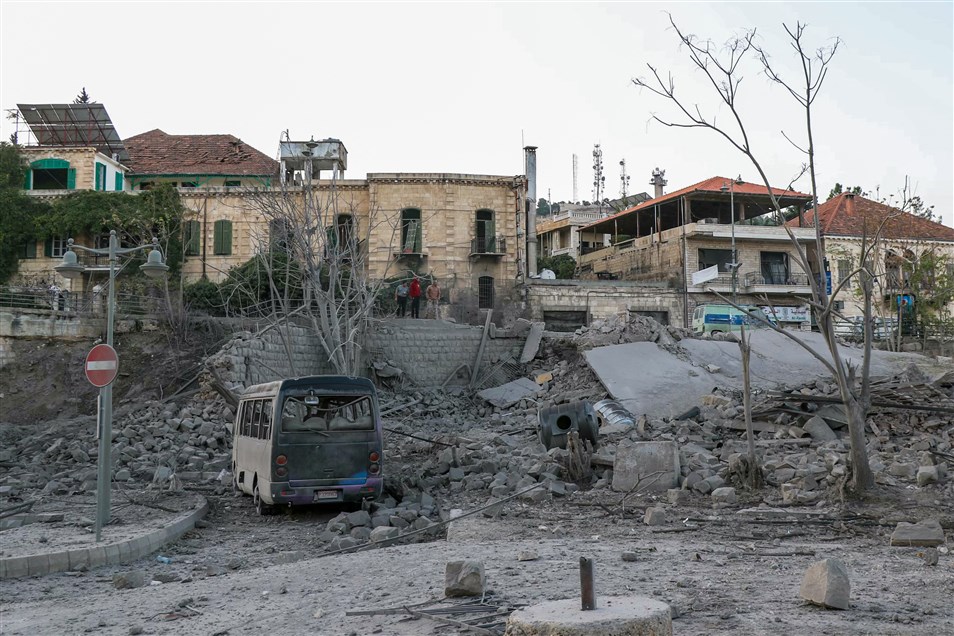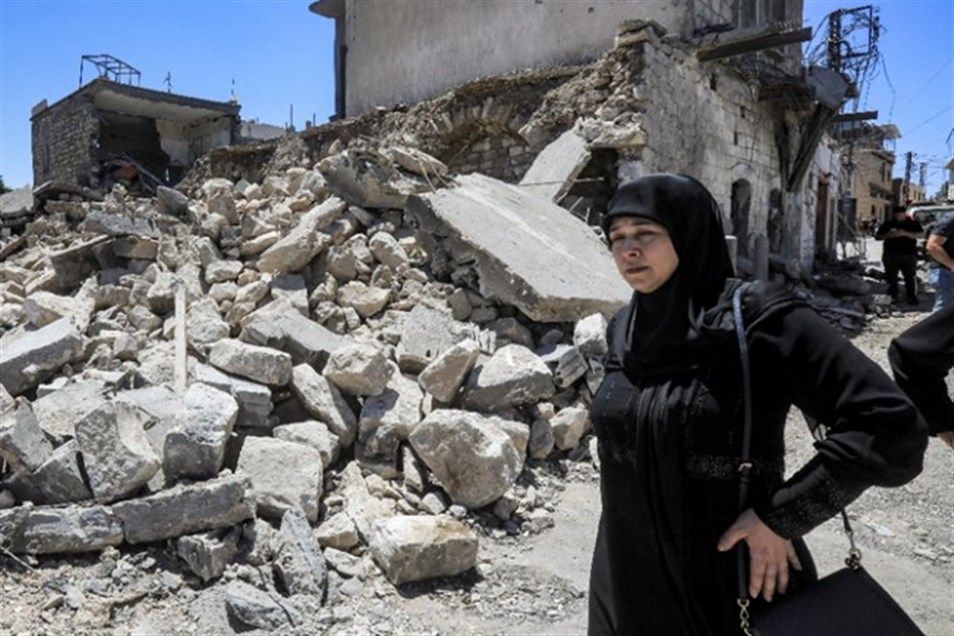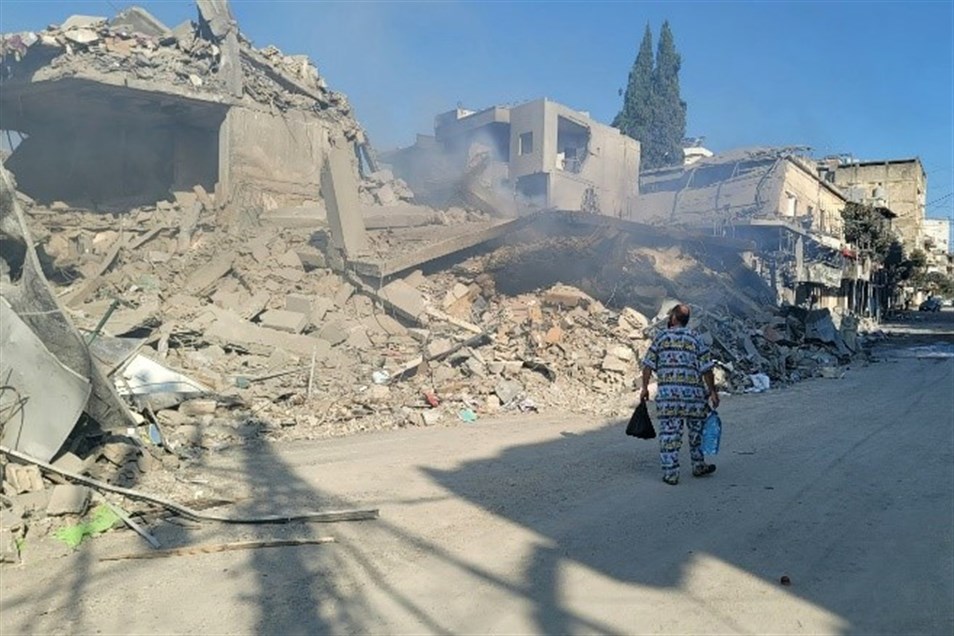Not Collateral Damage but a Deliberate Act of Cultural Erasure
For several weeks now, Israel has systematically targeted cultural heritage sites in Lebanon. These attacks, like those in Gaza, are not mere collateral damage but deliberate acts with profound consequences. The physical destruction of buildings, monuments, and artifacts is just the surface of a deeper wound—an assault on collective memory and identity. Cultural heritage is central to a people's sense of belonging and their connection to their land and history.
The threats of damage to the Roman ruins of Baalbek and Tyre have drawn international attention and widespread condemnation, but the damage has already taken place to a massive extent if we widen the scope far beyond these iconic sites. Historic buildings, traditional souks, vernacular villages, and the disruption of age-old rituals around harvesting and other cultural practices all form a bond between people and place. These practices offer a framework for shared identity and pride that is difficult, if not impossible, to replace.


In Lebanon, the targeting of cultural heritage extends far beyond national monuments and UNESCO World Heritage Sites. This campaign of destruction is not incidental; it is an integral part of the military strategy. The consequences are not only physical but also psychological and socio-cultural.
Every destroyed mosque, church, or communal space is more than just a building. These sites are repositories of shared memories, rituals, and collective histories. For the people of Lebanon, they are not only symbols of religious or historical significance but centers of daily life, economy, community, and identity. Their loss cuts deep into what it means to belong.
In recent months, Israeli military operations have devastated South Lebanon and the Beqaa Valley, targeting not just monuments but also the cultural practices that sustain the community’s identity. The ancient cities of Baalbek and Tyre, home to Phoenician and Roman ruins and UNESCO World Heritage Sites, have been hit by airstrikes. On October 6, 2024, Israeli rockets struck near the Roman Temple of Bacchus in Baalbek, destroying part of a stone wall. Another strike on November 7 caused significant damage to the Ottoman Manshiya building near the Roman temples. Tyre has also been targeted several times, with airstrikes on October 23 and 28 threatening the integrity of its archaeological and historical sites.
The destruction reaches beyond ancient ruins to include religious buildings, vernacular architecture, markets, and community spaces. Mosques and shrines in villages like Yaroun, Maroun el-Ras, and Blida have been destroyed or damaged, as well as the Melkite Greek Catholic church in Tyre and the Crusader Castle of Tibneen. On October 14, strikes targeted the Ottoman Mosque in Kfar Tebnit, and destroyed major sections of the 200-year-old souk of Nabatieh, which was targeted for the fourth time on November 14. Further attacks on October 9 and 16 destroyed Saint George’s Church in Dardghaya, the Ayyubid shrine in Baalbek-Douris, and the Prophet Benjamin shrine in Mhaybib. Additionally, on October 29, the Baalbaki House in El Odaisseh, a cultural center founded by the late Lebanese artist Abdel-Hamid Baalbaki, was targeted. This cultural space, once home to art exhibitions, concerts, and intellectual gatherings, exemplifies the broader assault on Lebanon’s cultural landscape.


To fully understand the destruction of cultural heritage, it’s essential to expand our definition of "heritage." It encompasses not only monumental or tangible structures but also the intangible aspects of cultural heritage —everyday practices, rituals, and customs that shape community life. These practices, such as cultivating olive groves, preparing traditional foods, and celebrating cultural events, are just as integral to a community’s identity as physical monuments and artifacts.
In Lebanon, the ongoing conflict has disrupted not only the physical landscape but also the socio-economic fabric of everyday life. Activities like olive harvesting and the producing traditional preserves, which tie people to their land, are at risk of being lost due to displacement and destruction. This assault on both tangible and intangible heritage aims to sever the connection between people and their culture, weakening social cohesion and continuity.
One of the most insidious effects of targeting cultural heritage is its role in forced displacement. When communities are uprooted, their cultural practices suffer disruption. The physical destruction of heritage goes hand in hand with the loss of cultural continuity, leaving communities not only homeless but culturally orphaned. This creates a disconnection from the past, the land, and each other, resulting in a profound sense of loss and dislocation.
The attacks on Lebanon’s cultural heritage are a form of psychological warfare, which breaks the spirit of the people by erasing their sense of self. Heritage, in this context, is more than just a collection of structures and artifacts; it is the dynamic process through which a people’s identity is shaped and their connection to place is maintained. By targeting these sites, the Israeli military is attempting to erase not just visible symbols of Lebanese history, but the very social fabric that gives life to these symbols.
The destruction of cultural heritage in Lebanon underscores the urgent need for local, national and international protections and frameworks to safeguard cultural sites and practices during conflicts. ICOMOS, in a statement published on 17 October 2024, condemned the destruction of heritage sites and the very “living fabric of towns and rural settlements,” and called “on all parties to do all in their power to protect cultural heritage and to respect to the letter and the spirit their obligations under international law, both treaty and customary”. ICOMOS also reminded and stressed “that the intentional targeting of cultural and religious sites (that are not legitimate military objectives and have no imperative military necessity), as other civilian objects, is prohibited specifically, under any circumstances, in international humanitarian law and is considered a war crime.”
The damage is not merely symbolic but has far-reaching socio-cultural and economic consequences that hinder the recovery process. Protecting cultural heritage is crucial not only for preserving the past but also for fostering resilience and reconciliation in post-conflict societies.
Recovery efforts must go beyond the preservation of monuments to include the revitalization of cultural practices and the rebuilding of communities’ connections to their land. Cultural heritage is not just an artifact of the past but a foundation for future growth, providing a basis for identity, social cohesion, and economic recovery. It is through the protection of both tangible and intangible heritage that societies can rebuild not just their physical landscapes, but their sense of self and belonging.
In addition to the great loss of human lives and property, the deliberate targeting of cultural heritage in Lebanon, as in Gaza, underscores the profound impact of war on a community’s identity and collective memory. The destruction of national monuments, religious sites, vernacular architecture, and everyday cultural practices is not merely an assault on physical structures, but an attack on the very essence of what makes a society whole. As we witness this destruction unfold in landscapes inscribed with sacred narratives and in cities that are among the oldest continuously inhabited in the world, it becomes increasingly clear that cultural heritage is not a luxury or an afterthought- it is a vital component if we are to go on living, to endure and thrive.
References
- Becky Little “7 Cultural Sites Damaged or Destroyed by War” History, 9 January, 2020
- Helen Walase Bosnia and the Destruction of Cultural Heritage, 2015
- Howayda Al-Harithy “The Politics of Identity Construction in Post War Reconstruction” in Lessons in Post-War Reconstruction: Case Studies from Lebanon in the aftermath of the 2006 War, ed. Howayda Al-Harithy (Routledge, 2010)
- Howayda Al-Harithy and Dina Mneimneh “The [Framing] of Heritage in the Post-war Reconstruction of Beirut Central District (Lebanon),” in Urban Recovery: Intersecting Displacement with Post War Reconstruction, edited by H. Al-Harithy. London and New York: Routledge (2022)
- Jane Arraf and Jawad Rizkallah “Israel strikes Lebanon’s ancient city of Baalbek, as tens of thousands of people flee” NPR, 31 October 2024
- Martin Coward Urbicide: The Politics of Urban Destruction, 2008
- Maya Gebeily and Milan Pavicic“Israeli campaign leaves Lebanese border towns in ruins”, Reuters, 29 October, 2024
- Niveen Hashishou “Israel Tukharib alMawaqi alTarikhiyah fi Lubnan”, Alsifr.org, 1 November, 2024
- Philippe Pernot “Concern for Lebanon's heritage grows as Israel intensifies destruction of historic landmarks”, The New Arab, 28 October, 2024
-Sophie Constantin “Lebanese archaeological heritage is now facing existential threat: Israeli air strikes”, The Jordan Times, 29 October, 2024